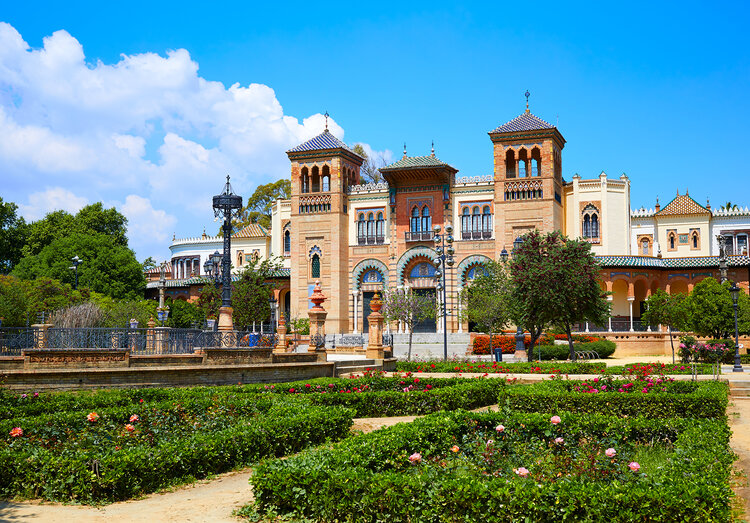María Luisa Park is the first urban park in Seville (Andalusia, Spain) and one of its green lungs.
In 1983 it was declared an Asset of Cultural Interest in the category of Historic Garden.
It was inaugurated on April 18, 1914 as the Infanta María Luisa Fernanda urban park.
These spaces, which were originally part of the private gardens of the San Telmo Palace, were donated in 1893 by the Infanta María Luisa Fernanda de Borbón, wife of the Duke of Montpensier, to the city.
The squares of Spain and America , built for the Ibero-American Exposition of 1929, are integrated into the park like a public garden and constitute one of the main attractions.
The park has an area of 34 hectares, of which has an extensive plant variety, very lush in many places, open in others, with some large areas of grass.
The park, as it can be seen today, is quite similar to that of the 1929 Exhibition.
It also contains a great variety of poultry species, among which we can highlight peacocks and songbirds, swans and ducks that sometimes wait to be fed by passers-by with bread or grains sold in places like the Plaza de América.
In the north is the Plaza de España, which, since 1992, has the Military History Museum.
In the southern part is the Plaza de América with the Museum of Popular Arts and Customs and the Archaeological Museum. In this square a large number of pigeons gather and for this reason the park in general is also known by the nickname «Parque de las Palomas».


Leave A Comment